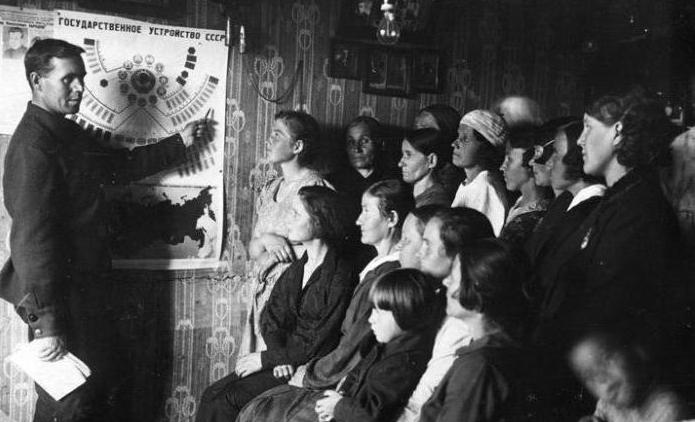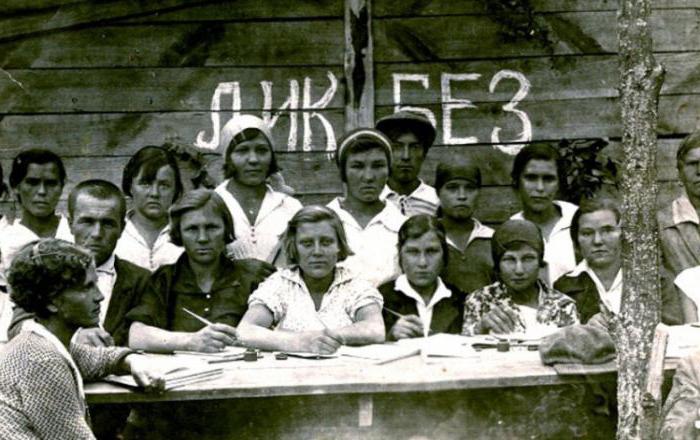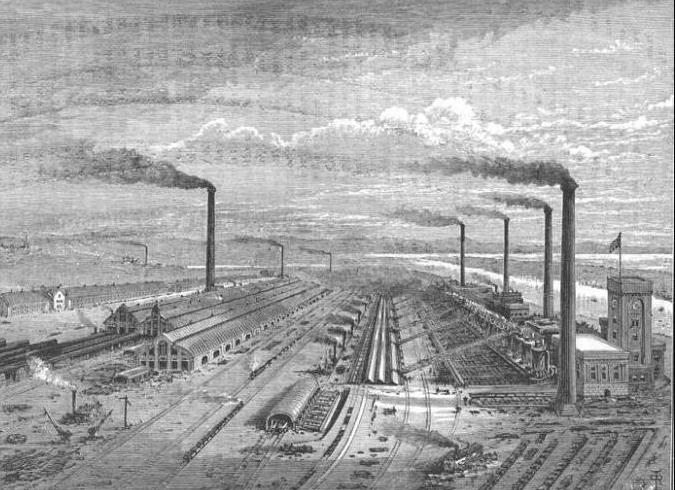Likbez is a term that appeared at the beginning of the last century
Likbez is a term that appeared in Soviet Russia. What does it mean and how is it deciphered?
Likbez is an event whose goal is to teach adults to read and write. This concept had its meaning in the twenties. Later the term acquired a slightly different shade.

Prehistory
At the end of the nineteenth century, Russia took the pathindustrial development. But the general level of literacy of the population left much to be desired. Among the inhabitants of Siberia, for example, few could write and read. According to statistics, it was only one in ten, if you do not take children into account before the age of nine. By 1914, the number of educated people in Russia had increased slightly, but war, hunger and other negative events led to their number again declining.
By 1920, educated people in the country becameis catastrophically small: some have emigrated, others have been shot. The new government took up the solution of this problem: a decree was adopted on the establishment of an emergency commission to eliminate illiteracy. From now on, every citizen had to learn how to write and read.
Likbez is a struggle against illiteracy. First of all, this state program was aimed at a special layer of the population - street children, who after the Civil War turned out to be in the streets of the country a myriad. It was during these years that the teacher Makarenko began his work, who found it necessary not only to teach complex adolescents the basics of reading and writing, but also to involve them in labor.
Likewise points
Homeless children were sent to special boarding schools. But there were a lot of people in the country who did not commit crimes, they were completely reliable, but they could not even write their own name. For them, schools were created.
These institutions were called liquidation points, and citizens over fifteen years of age were trained there. The program was rather concise. The training lasted no more than four months.

Down with illiteracy!
An educational and methodological base was created with the aim ofan important event called illiteracy. These were, as a rule, pamphlets with plain phrases for reading and poems by Soviet poets. The letters were issued specially for representatives of the workers 'and peasants' class.
In 1925, the elimination of illiteracyturned into a program that was oriented not only on learning the basics of writing and reading. Now, under the educational program, it was also understood that the people were being impressed with an ideologically correct point of view.
By the beginning of the thirties the number of schools of educationincreased several times. Over twenty million citizens were trained in these institutions. According to data for 1929, the percentage of illiterate people in the USSR at the age of fifteen to sixty years was no more than 10%.
</ p>




